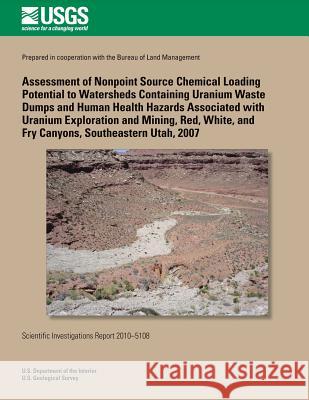Assessment of Nonpoint Source Chemical Loading Potential to Watersheds Containing Uranium Waste Dumps and Human Health Hazards Associated with Uranium » książka
Assessment of Nonpoint Source Chemical Loading Potential to Watersheds Containing Uranium Waste Dumps and Human Health Hazards Associated with Uranium
ISBN-13: 9781500504779 / Angielski / Miękka / 2014 / 38 str.
Assessment of Nonpoint Source Chemical Loading Potential to Watersheds Containing Uranium Waste Dumps and Human Health Hazards Associated with Uranium
ISBN-13: 9781500504779 / Angielski / Miękka / 2014 / 38 str.
(netto: 65,47 VAT: 5%)
Najniższa cena z 30 dni: 68,19
ok. 16-18 dni roboczych
Bez gwarancji dostawy przed świętami
Darmowa dostawa!
During May, June, and July 2007, 58 solid-phase samples were collected from abandoned uranium mine waste dumps, background sites, and adjacent streambeds in Red, White, and Fry Canyons in southeastern Utah. The objectives of this sampling program were to (1) assess the nonpoint-source chemical loading potential to ephemeral and perennial drainage basins from uranium waste dumps and (2) assess potential effects on human health due to recreational activities on and around uranium waste dumps on Bureau of Land Management property. Uranium waste-dump samples were collected using solid-phase sampling protocols. After collection, solid-phase samples were homogenized and extracted in the laboratory using a leaching procedure. Filtered (0.45 micron) water samples were obtained from the field leaching procedure and were analyzed for major and trace elements at the Inductively Coupled Plasma-Mass Spectrometry Metals Analysis Laboratory at the University of Utah. A subset of the solid-phase samples also were digested with strong acids and analyzed for major ions and trace elements at the U.S. Geological Survey Geologic Division Laboratory in Denver, Colorado.
Zawartość książki może nie spełniać oczekiwań – reklamacje nie obejmują treści, która mogła nie być redakcyjnie ani merytorycznie opracowana.











